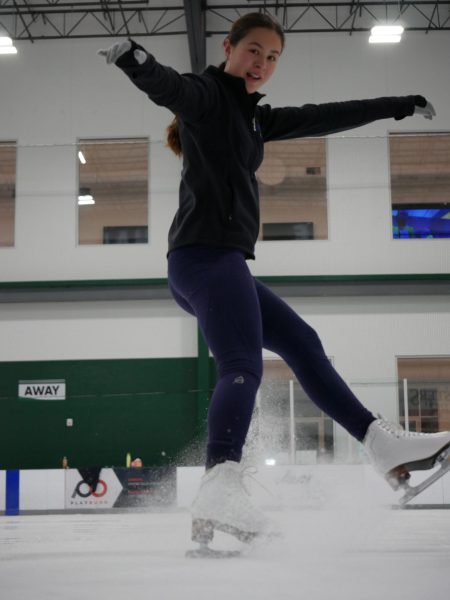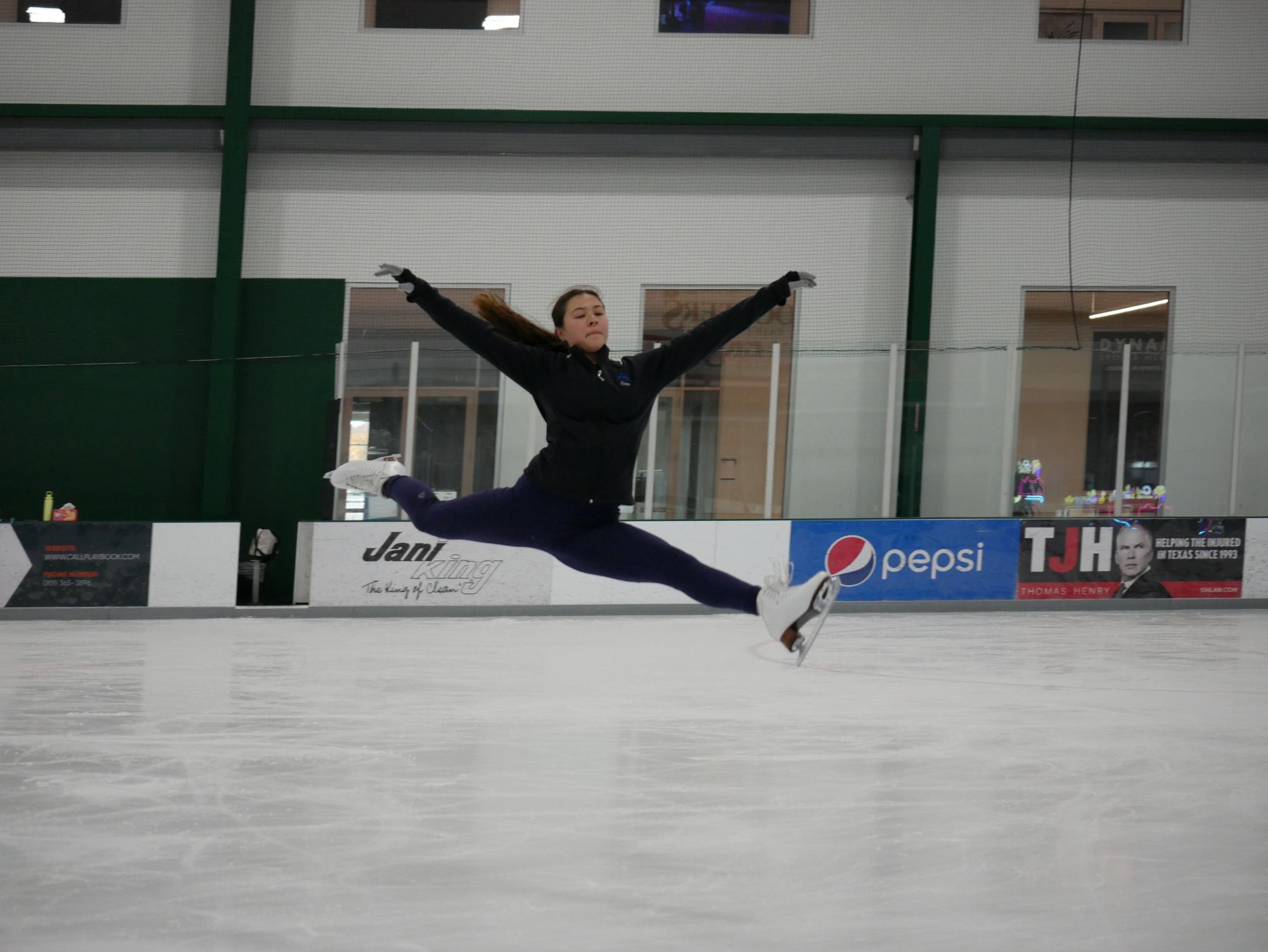Seemingly effortless, senior Sara Tusken gracefully coasts across the ice as her white skates bring her one step forward to making her art a future career. Tusken has made it a goal to skate in the Royal Caribbean Cruise Line Ice Show.
From figure skating in Japan to being in the Austin Figure Skating Club, Tusken has been skating since she was seven-years-old. She practices at least five days a week, including before and after school. In order to have strong technique, Tusken has off-ice ballet practice as well.
“On the blade, we can’t really control ourselves so training off-ice jump exercises and spin exercises is very important,” Tusken said. “Figure skating is like art, we want the lines and ballet structure.”
In addition to the hours of practice each week, Tusken also coaches children from the age of two and adults up to the age of 60 yearning to figure skate at the Crossover.
“It can be really challenging [to coach] because the parents have unrealistic expectations or difficult kids,” Tusken said. “But I really like it. It really helps me with my skating. I am constantly thinking and I want to be better because they’re watching me. I want to be a better role model.”

The Crossover offers freestyle sessions on the rinks that allow for figure skaters to practice their technique. Tusken has performed both solos and duets with her students there.
“I don’t think people realize how much work [figure skating] takes,” Tusken said. “People make it look so easy but it’s actually so hard. We still fall down so many times and we get injured. What it takes to get that single performance is crazy. Skates are super sensitive like you need the perfect blade [and] the perfect boots. Small details matter a lot in performances.”
Tusken had the opportunity to choreograph some of her own numbers in Japan because she didn’t have a coach. A program is a part of the competition that skaters are judged on. Besides performing programs created by her coaches, Tusken has also created three programs by herself.
“It can be hard [to choreograph] because you want something that looks good on you and feels right for you,” Tusken said. “You still have to meet the requirements and you still want to express yourself. It depends on you because some people can’t do choreography at all and some are really good. It depends on what you like. I like choreography and it’s fun, you can do what you want. You can make your world.”
According to the U.S. Olympic and Paralympic Museum, figure skating debuted as a sport in the 1908 Summer Olympics and later became a part of the winter sports in 1924. Tusken watches professional figure skaters at performances and competitions to cultivate her craft further. Tusken had the opportunity to watch Skate America in October after they did competitions in Canada, Japan, France, Italy and the United States. The Skate America competition was in Dallas this year.
“Moving [to the United States], I didn’t really have anything else,” Tusken said. “I couldn’t speak with friends and on the ice, it doesn’t matter at all. I met my coach a couple years ago and she went to Olympics and she’s also Japanese. She’s the best person that you’ll ever meet, she’s so passionate about it. She cares so much about other people and I admire her so much, [she] keeps me motivated and I’m a lot more passionate about it.”
After moving from Japan sophomore year and being in a figure skating club there, Tusken found comfort with skating here.
“I think it’s really important to have a passion,” Tusken said. “I can’t imagine not having any passion for anything because my life is all skating right now. I want to go as high as I can because I’ve spent so much money and so much time on it since I’ve started. It has taught me so much. It is always there. I wake up and I’m excited to skate. I want to do it. I think I’m lucky and I hope everybody has that in some sort of way.”


